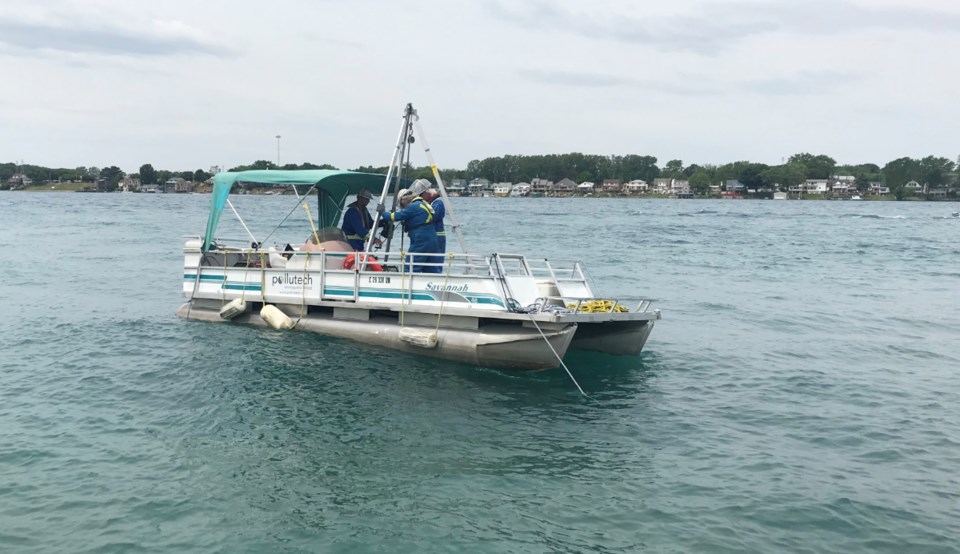Cathy Dobson
Sediment contaminated with mercury on the floor of the St. Clair River is recovering naturally and won’t require dredging after all, say analysts leading the cleanup.
Instead, they propose capping the contaminated areas with a layer of fine gravel.
“Mother Nature is a wonderful thing. Generally, we’re seeing positive trends in terms of recovery,” said Betsy Henry, a principal scientist with Anchor QEA and part of a team hired to finalize engineering and design plans.
Henry spoke during a recent public information session about three priority areas believed to have been contaminated with mercury by Dow Chemical decades ago.
Dow left Sarnia in 2009 after removing all the contaminated sediment along its stretch of property on the St. Clair River. But three remaining “hot spots” are a cleanup priority: near the Suncor Energy dock, the Shell Canada loading dock, and Guthrie Park between Sarnia and Corunna.
Several deposits buried deeper in the riverbed near Stag Island are also being studied.
The latest data gathered from 99 sediment samples show mercury levels have decreased substantially since they were measured a decade ago, said project manager Mike Moroney with the St. Clair Region Conservation Authority.
Commercial fishing in the St. Clair River was shut down in 1970 because of mercury pollution, and the river has been listed by the International Joint Commission as an environmental Area of Concern since 1989.
The remaining “hot spots” are a concern because mercury can move up the food chain when fish eat the worms and organisms living in the sediment.
Researchers expected to find mercury concentrations in surface sediment exceeding 10 milligrams per kilogram. The new samples were in the “relatively low” range of 2.3 to 2.6 milligrams in the three priority areas, said Henry.
Even a major storm in 2019 that stirred up the river did not raise contamination levels.
“It’s all very good news,” said Moroney.
As a result, his team is now recommending the three areas be capped with an erosion-resistant cover of washed fine gravel placed 15 -25 cm deep where the mercury concentrations are the highest.
Though capping is less expensive than dredging, “cost was not one of the factors considered for our report,” Moroney said.
“Regardless of the cost, our goal is to make sure the right engineering and design work is in place.”
The team was assembled in 2018 to analyze the contaminated sediment and propose a strategy to remove it.
The effort to clean up the St. Clair River and remove historic pollutants has been ongoing for decades. Eight years ago, it was anticipated a $28-million dredging project would be needed to remove the sediment and help delist the river as an Area of Concern.
Moroney said the low concentrations mean the plan can be revised. Capping will disturb the river bottom less and pose less risk to fish.
The analysis concluded the sediment is stable and the possibility of re-exposure highly unlikely, said Ed Glaza, a member of the team from Parsons Inc.
“In general, the priority areas continue to accumulate clean sediment over time,” said Glaza.
Contamination deposits deeper than 50 centimetres are considered stable with no further action required.
The federal and provincial governments, along with Dow Chemical, provided $1 million for the detailed engineering and design plan.
The team’s final report will be released later this year. Discussions can then start about when the remediation would begin, said Moroney.
Mercury concentrations in drinking water were never a concern, Henry said.
The team held an online community information session on June 22 that can be viewed at www.stclairsediment.ca.
